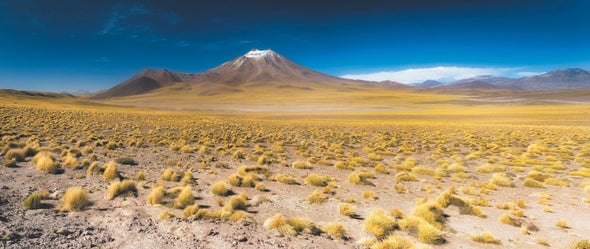For the past decade, Rodrigo Guti é rrez, a systems biologist, has driven 1600 kilometers (1000 miles) each April to one of the driest places on earth: Chile’s Atacama Desert, where parts of the desert receive less than 3 millimeters of rainfall a year. His team collects plants and soil from nearly 20 locations every year, freezes the samples in liquid nitrogen and takes them back to the laboratory of the Roman Catholic University of Chile. In a new study published in the proceedings of the National Academy of Sciences, giterres and his colleagues analyzed the genes and microorganisms of these plants that help them thrive under extreme conditions.
“We know very little about how these plants survive,” Gutierrez said. “There is great potential to study these wild species, and it is now easier to use all the genomic tools we have.” His team surveyed 32 plants from three altitudes, some of which are closely related to Cereals, beans and potato crops.
Scientists usually do genetic research on plants grown in the laboratory, which allows researchers to strictly control factors such as nutrition and light absorbed by plants. However, sampling plants in nature can capture key differences according to their different living conditions. Neelima Sinha, a plant biologist at the University of California who was not involved in the study, said the study “integrates genomics with an ecological understanding of plant behavior in the natural environment”. “This is very important in itself.”
In order to identify genes that contribute to plant survival, Gutierrez worked with ecologists, plant biologists, genomics experts and computer scientists to compare the genetic codes of sampled Atacama species with those of close relatives. The researchers called it “gene gold mine”. They tracked the evolutionary changes of the genome and identified adaptive mutations related to stress response, metabolism and energy production. These mutations may help desert plants tolerate strong solar radiation, optimize water capture, and adjust flowering time. The researchers also found a large number of bacteria, which live in the roots of desert plants and convert nitrogen in the air into usable forms, helping to grow in nitrogen poor soils.
Guti é rrez said researchers may insert the newly discovered genes into edible plants and forages used for biofuels, giving these species a better chance of survival when planted in saltier soil and in arid areas where climate change is expected to become more severe.
doi:10.1038/scientificamerican0222-20
